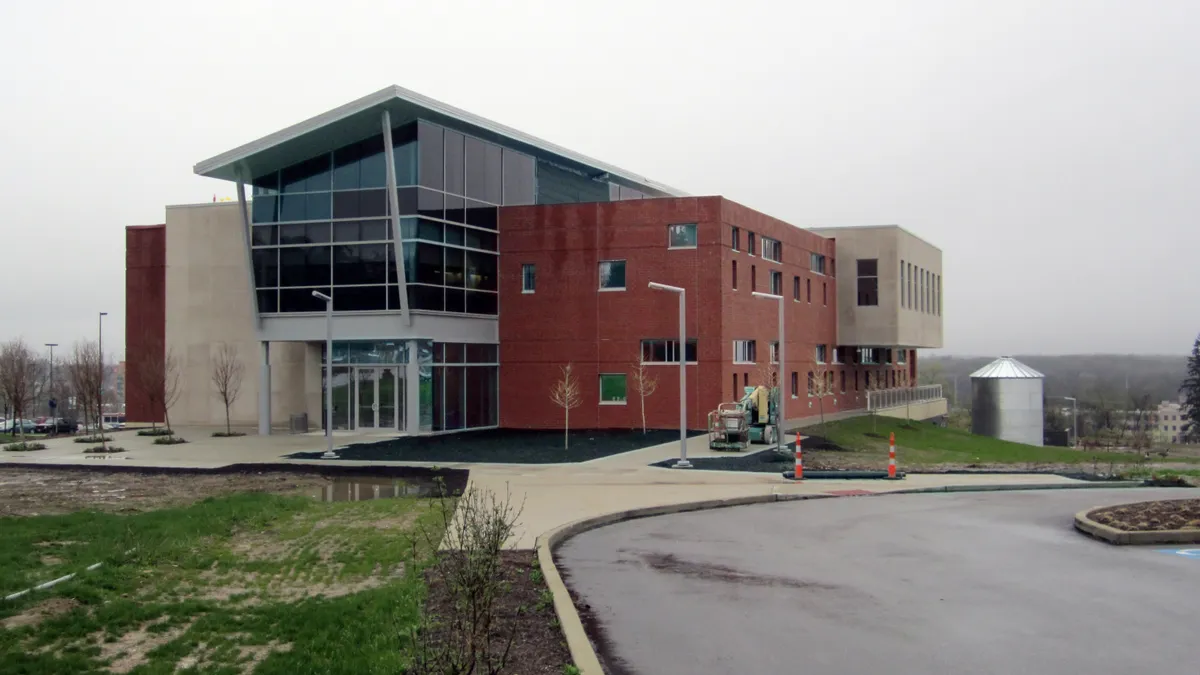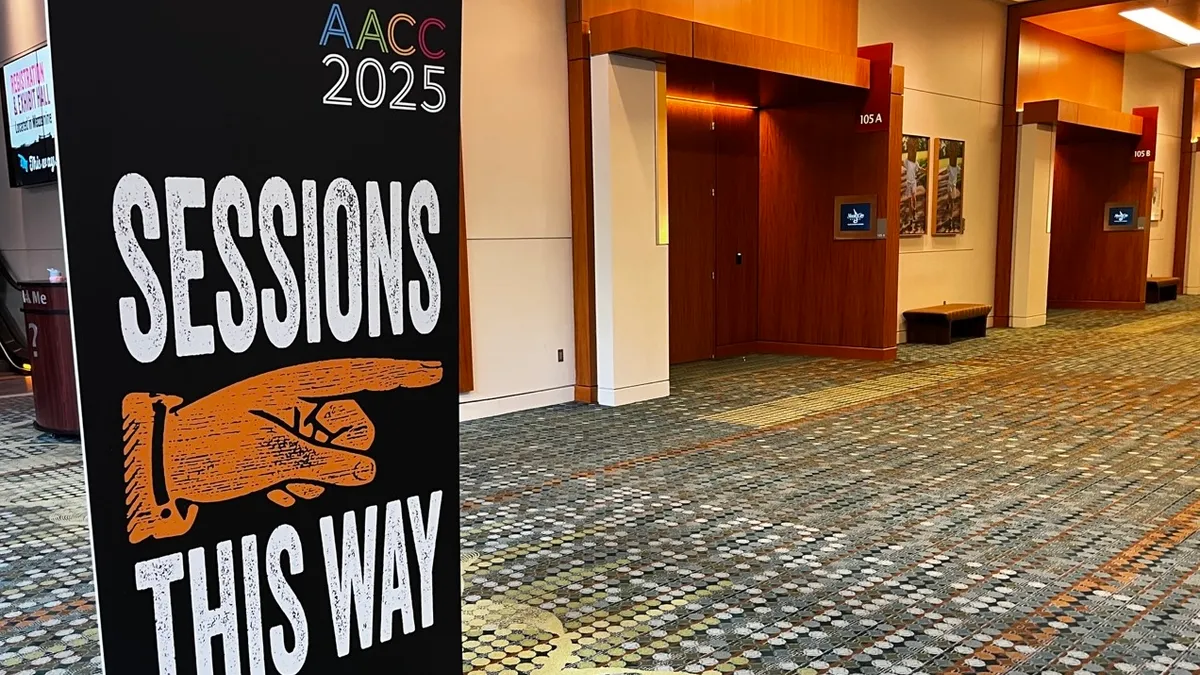Public community colleges are often hailed as engines of economic and social mobility for low- and middle-income students, as they tend to be more accessible and less expensive than their four-year and private counterparts.
But the completion rate at two-year public institutions is low. Among community college students who first enrolled in 2016, 43.1% graduated within six years, according to the National Student Clearinghouse Research Center. That's compared to 68% of students at public four-year institutions and the national average of 62.3% for all types of colleges.
Efforts are underway to shrink the completion rate gap between community colleges and other institutions. An experiment in Ohio has done just that by adapting a completion program originally established 600 miles away for the City University of New York system.
Beginning in 2014, three of Ohio’s community colleges worked with their state’s higher education department, the research firm MDRC and CUNY to customize and implement a version of the system’s Accelerated Study in Associate Programs, or ASAP, which focuses on comprehensive advising and financial support.
The original CUNY ASAP is an oft-cited student success story in higher education. Students within the 16-year-old program have been found to graduate within three years at double the rate of students who aren’t in CUNY ASAP.
"As with any very successful program, the next question is, does it work elsewhere? Can we scale it? Can we replicate that?" said Colin Hill, postsecondary education research analyst at MDRC. "This is particularly important given that CUNY is pretty unique as an extremely large system in an extremely large city."
A recent study of 1,500 Ohio community college students suggested the success could be replicated.
After six years, students in Ohio's version of ASAP were more likely than their non-ASAP peers to earn a degree, enroll in a four-year college and have higher average earnings, according to a report from MDRC. What's more, researchers are optimistic that ASAP can be customized to different regions while still maintaining the original's strong student outcomes.
Benefits and eligibility
Through Ohio ASAP, three colleges — Cincinnati State Technical and Community College, Cuyahoga Community College, and Lorain County Community College — offered eligible students up to three years of academic and financial support services.
ASAP students gained access to proactive advising, personalized career counseling services, and tutoring opportunities. They also received help paying for textbooks and got monthly $50 gift cards to put toward groceries and gas.
That last feature is an enticing offer, as it addresses the challenges students often face outside of the classroom, Hill said.
"Many community college students are balancing competing priorities of family or work," he said. "That extra boost each month can help them cover loose ends and focus on school a little more."
But while the financial incentive may have gotten people in the door, Hill said students quickly saw the value of the other program benefits.
"Once they start meeting with the adviser and start engaging with the communities in these programs, that is what keeps them there," he said.
To qualify for Ohio ASAP, students had to be seeking a degree, willing to enroll full time in a three-year program and eligible for federal Pell Grants. Pell eligibility is often used as a rough proxy for low-income status.
To determine the program's efficacy, researchers randomly divided the students into groups that would either receive the support services or not.
Spread over three cohorts — spring 2015, fall 2015 and spring 2016 — just over 1,500 students participated in the study.
Nearly half were considered nontraditional, which the researchers defined as those who were ages 24 and older, worked 35 hours per week or more, had children, or had received a GED certificate or other high school equivalency instead of a high school diploma.
About a third of the study's participants were first-generation college students, and just over a quarter were parents. Almost 60% of the students had jobs, and a quarter worked full time.
Additionally, almost 75% of students in ASAP Ohio had been assigned remedial courses.
Remedial courses are intended to help incoming students achieve college-level proficiency in skills like English or mathematics. But the classes aren't credit-bearing, potentially delaying students from completing their degrees.
Ohio results
After six years, 43.7% of community college students who received support services through Ohio ASAP earned a degree, compared to 28.6% of those who did not. More ASAP students also went on to earn bachelor's degrees, 13.6% compared to 8.6% of their peers.
"To show that this program could be tested in a totally different context with programmatic changes, geographical changes, and changes to the institutions, and the findings were replicated was really exciting," Hill said.
MDRC’s report of the findings — the first of three long-term analyses planned for Ohio ASAP — was also the first time researchers studied the economic and labor market effects of the program.
Just over 70% of both student groups were employed six years after they first enrolled. But ASAP students who reported income that year earned 11% more than similar students who were not in the program, $27,715 compared to $24,955.
"Time and time again, we're seeing really strong academic impacts," Hill said. "But until this brief came out, we weren't able to say if the program actually impacted students' labor market outcomes — namely earnings."
Researchers still want to discover whether Ohio ASAP affected students' employment beyond having a job. The data used to calculate labor market outcomes didn't break down jobs by full- or part-time employment and didn't distinguish between permanent and contract-based employment.
"It remains an open question whether the Ohio programs may have impacted the type or consistency of employment students pursued," the report said.
The original ASAP
The Ohio program is ASAP’s first and longest-running replication partnership. Since then, CUNY has published guides on the program’s structure and has seen the model replicated at six other colleges and systems, some of which have had early success in boosting participants' full-time enrollment, persistence and credit attainment.
Ohio ASAP kept the core tenets of the original program, including dedicated advising and financial support. But Ohio’s version made minor tweaks to localize it for the state’s students, Hill said.
One example was the forms of financial assistance.
"In New York, that was a free MetroCard, so students could use public transportation," Hill said. "In the Ohio adaptations, it was gas and grocery gift cards."
The Ohio community colleges also had to adapt some aspects due to system limitations.
CUNY ASAP offered students block scheduled first-year courses, meaning they took fewer classes at once. This is designed to help students adjust to college and build academic momentum. But the Ohio colleges' enrollment systems made that kind of scheduling challenging, according to Hill.
Instead, program leaders took an ad hoc approach and worked to place participating students in the same sections of required classes to create a sense of community.
"They would build a kind of cohort within introductory classes," Hill said. The classes "tend to be challenging so you want everybody to have a good group and someone to lean on."






















